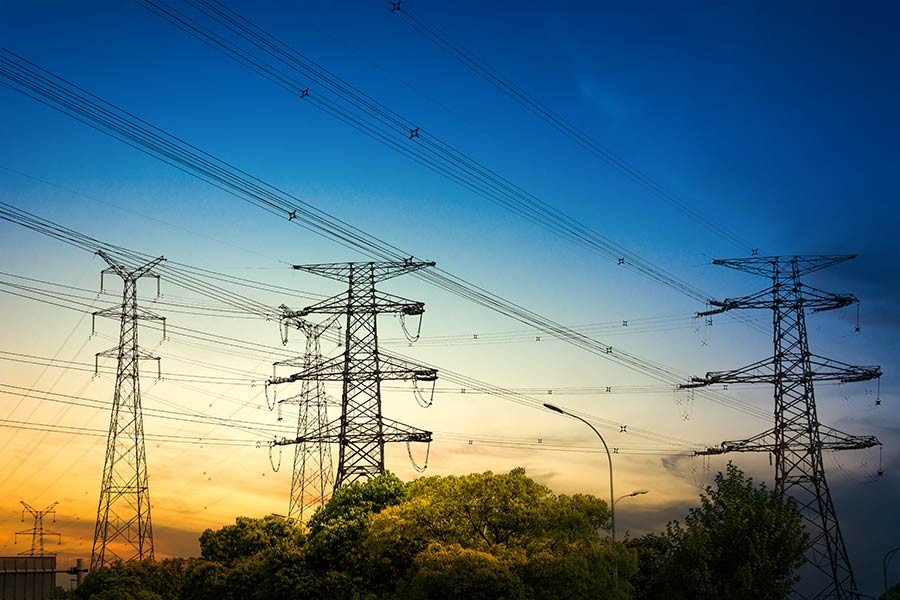The government has been considering to reduce power tariff for industrial consumers. Power Division of the Ministry of Power, Energy and Mineral Resources has reviewed the current power consumption and its tendencies and recommended tariff reduction to attract industries to grid power. Presently, industrial sector consumes 29.54 per cent grid power and approximately 2,800 MW captive power (generated by the industries for own use). The existing tariff for the industrial consumers vary from Taka 8.36 to 8.41 per unit depending on the power supply (230 kV, 132 kV, 33 kV and 11 kV) line voltage for the supply. Those industries ready for getting power lines from 230 kV lines may get power supply at Taka 7.23/unit, from 132 kV line at Taka 7.28/unit, from 33 kV line at Taka 7.38/unit and from 11 kV line at Taka 7.48/unit. The existing tariff for the supply lines are Taka 8.36/unit, Taka 8.36/unit, Taka 8.41/unit and Taka 8.40/unit respectively. The recommendation for power tariff reduction for industrial consumers are linked with the intention to reduce natural gas supply to industries for captive power generation. It has been a general tendency of the industries to install captive power plant with natural gas supply from the national gas grids and meet power demands from its own captive generators.
BPDB and its subsidiary companies have been uncomfortable to see that the captive power generation has been growing and industries showing less interest to get grid power supply. Published information suggest that total grid power demand for industries has come down from 37 to 29.54 per cent since 2010. Also, the EPZ (Export processing zone) and SEZ (Special economic zone) development initiatives include captive power plants within the industrial territories. Although it is not an immediate threat for BPDB and other grid power suppliers, the tendencies of the industries for reduced interest in grid power may soon be a big problem. The power plants' capacity under construction in the pipelines for grid supply may remain unutilised. Already BPDB has been under serious pressure for payments to idle power generation plants. The government has been facing the growing demands for subsidy payments as well for energy and power sectors every year.
Industries have so far been preferring captive power generation and consumption mainly due to their feeling of uncertainty as regards grid power supply quality and reliability. Also, industries if they continue to get cheaper gas supply (at a subsidised price) for captive power generation from Petrobangla and its subsidiary companies, higher cost for grid power becomes unattractive for them. On the contrary, declining gas reserve in the country may lead to 'cheap' grid gas supply to industries if more costly imported gas (converted from import LNG) is added to the pipelines and government continue to pay for the subsidies to gas sector. BPDB has a total 10,979 MW installed capacity of gas fired grid connected power plants (54 per cent of the total installed power generation capacity). Petrobangla presently supplies nearly 1,100 MMCFD gas to BPDB which can generate for 6,000 MW power. If more gas was supplied to BPDB, additional 2,250 MW power could have been generated for national grid at a 'cheaper cost'. But gas shortages compel BPDB to keep some of its gas based power plants idle and use costly liquid fuel for power generation for the grid demands (nearly 3,200 MW power has been generated from liquid fuel). Use of costly liquid fuel has been increasing grid power generation cost significantly. More share of liquid fuel based power generation will make grid power more costly.
Power Division wants to supply grid power to industries at a reduced cost provided the grid-connected customers would not ask for subsidised gas supply for captive power generation. Ministry of Energy and Power expects that if a large number of grid connected consumers are cut from subsidised natural gas supply for captive power, a reasonable volume of natural gas (approximately 100 MMCFD within next 20 months) will be 'freed' and Petrobangla may supply additional volume of gas for BPDB plants.
The recommendation to reduce grid power tariff for industries may attract some industrial consumers if they get the supply security of uninterrupted power. Power Division officials consider that installation of dual power supply lines for the industrial clusters may help secure uninterrupted power supply. But, so far, it is unclear how the industry owners will react to such initiative. For industries, power tariff is an important consideration for maintaining cost of production within reasonable limits. At the same time, industries want reliable and quality power supply. Unpredictable power supply and power outages not only enhance cost of industry operations but also cause plant and machineries damage, breach of production schedules and quality of production. At present industries have been trying to rely on captive power partly because of higher tariff for grid electricity compared to captive power generation costs as well as for uncertainty associated with grid power supply.
Addressing reliable power supply is not only associated with transmission and distribution systems improvement but also with quality operations and maintenance of the power generation systems. BPDB has been trying to improve its transmission and distribution systems but the quality power supply is unlikely to be attained immediately. BPDB earlier tried to offer industries dedicated transmission lines for industrial consumers for uninterrupted power supply but such an attempt was unsuccessful, as industries have shown little interest for the initiative. Therefore, it is extremely important for Power Division and BPDB to analyse how consumer confidence can be attained for grid electricity. At the same time, the policy planners need to improve investment climate in the country, reduce cost of business to attract investment in industry sectors.
Mushfiqur Rahman is a mining engineer and writes on energy and environment issues.


